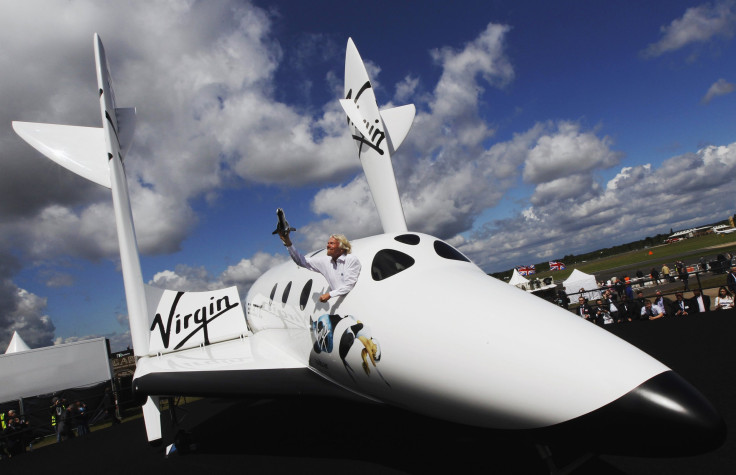Virgin Galactic Ropes In New LauncherOne Customer, Resumes SpaceShipTwo Test Flights

Virgin Galactic — the aerospace firm founded by the British billionaire Richard Branson — announced Monday that it had signed a contract for four satellite launches. The contract with the U.K.-based Sky and Space Global is for the launch of satellites via Virgin Galactic’s LauncherOne rocket, and is part of the communication firm’s plan to deploy a small-satellite constellation.
Virgin Galactic has already roped in several customers for satellite launches through LauncherOne, which is currently being developed at a facility in Long Beach, California. Last October, NASA awarded the company a $4.7 million contract for the launch of over a dozen experimental satellites through LauncherOne.
“Typically, ground-based launch vehicles must expend significant amounts of performance to deliver spacecraft to inclinations well away from the latitude of the launch site. By contrast, as an air-launched system, LauncherOne can optimize each mission to customer requirements by operating from a variety of launch locations—including launching the rocket from above or near the equator in order to most efficiently and cost-effectively insert satellites into low inclination orbits,” the company said in a statement.
The terms of the contract were not disclosed. The flights are expected to begin in 2018.
The announcement came just days after Virgin Galactic successfully completed the test flight of its latest SpaceShipTwo space plane VSS Unity. This marks the company’s first test flight since October 2014, when its previous SpaceShipTwo plane — the VSS Enterprise — crashed and killed one of its pilots.
During the nearly four-hour test flight, the VSS Unity, which the company touted as the first spaceship built entirely by The Spaceship Company — Virgin Galactic’s manufacturing arm — remained tethered to a “mothership.”
Today’s flight is wrapping up, VSS Unity heading home. Pilots plan to fly an approach before landing. #SpaceShipTwo pic.twitter.com/duzgmeKTbc
— Virgin Galactic (@virgingalactic) September 8, 2016
“Today’s flight test was what we called a ‘captive carry’ flight, during which VSS Unity remained mated to our WhiteKnightTwo mothership (VMS Eve) for the entire flight from takeoff to landing,” the company explained in a statement released Friday. “In this configuration, WhiteKnightTwo serves as a veritable ‘flying wind tunnel,’ allowing the highest fidelity method of testing airflow around SpaceShipTwo while simultaneously testing how the spaceship performs when exposed to the frigid temperatures found at today’s maximum altitude of ~50,000 feet and above.”
Virgin Galactic’s space program is crucially different from Elon Musk’s SpaceX and Jeff Bezos’ Blue Origin — both of which are currently working on rockets that can put payloads into orbit and eventually carry humans to Mars. Virgin Galactic, on the other hand, has so far focused its efforts primarily on space tourism with the goal of using its air-launched SpaceShipTwo planes to take passengers to the upper edge of Earth’s atmosphere.
“With this flight in the books, our team will now analyze a mountain of flight data, learning what worked well and what could be improved for our next flight test,” the company said. “Only when that analysis is done, along with detailed vehicle inspections, some already-planned work, and potentially more captive carry flights, will we be ready to move into the next phase of test flight.”
© Copyright IBTimes 2024. All rights reserved.






















